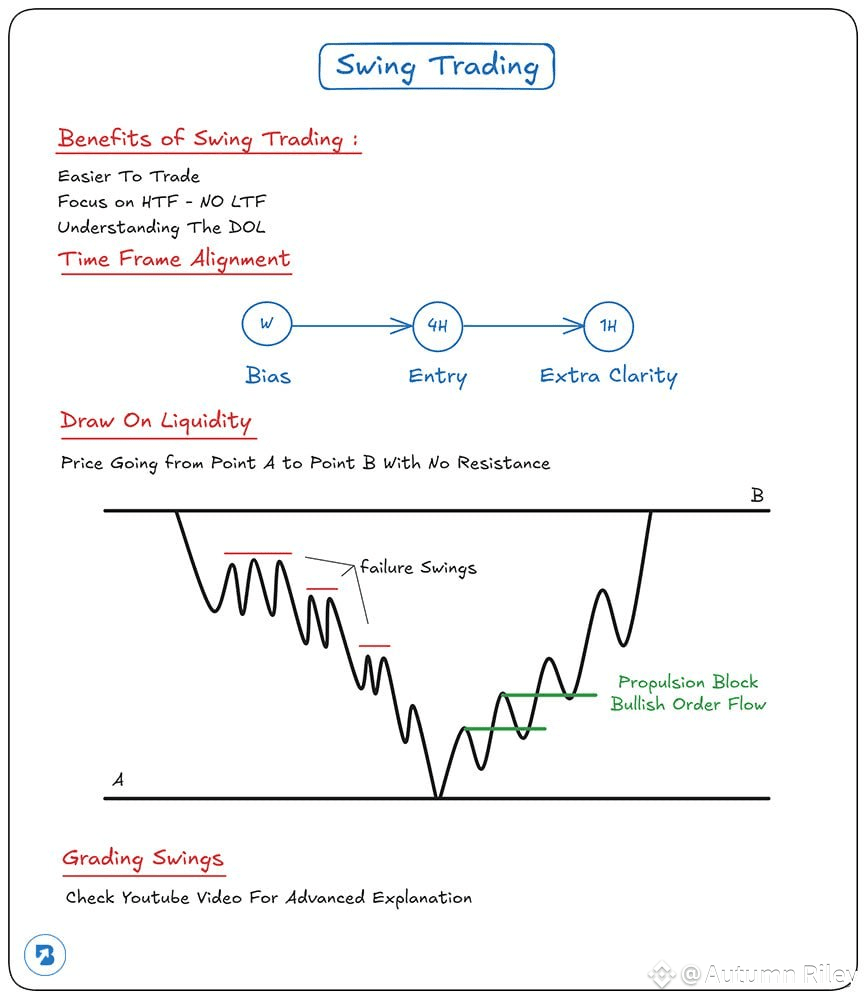In the fast-paced world of trading, swing trading stands out as a strategy built on clarity, structure, and patience. It’s not about catching every tick — it’s about catching the right move.

🧭 The Essence of Swing Trading
Swing trading focuses on capturing meaningful price movements that unfold over days or weeks. Rather than being glued to short-term charts, swing traders operate within cleaner structures — using higher timeframes to build bias and manage trades with less stress.
This approach filters out noise, emotion, and overtrading, allowing traders to see the bigger picture behind every move.
🟡 The Power of Timeframe Alignment
Success in swing trading lies in aligning multiple timeframes to create a consistent story.
Weekly Chart → Establishes market direction and overall trend bias.
4-Hour Chart → Identifies entry zones and optimal setups.
1-Hour Chart → Refines entries and confirms structure before execution.
This multi-timeframe synergy allows traders to execute with confidence and clarity, knowing each trade fits within the broader market context.
💧 Understanding Liquidity Flow
Markets move for one reason — liquidity.
Every sharp move, reversal, or breakout is the result of liquidity being taken or created. Price doesn’t just “move randomly” — it gravitates toward areas where orders rest, where traders are trapped, and where stop losses accumulate.
When liquidity on one side is cleared, price accelerates toward the next pool, creating that clean swing movement swing traders love. Recognizing these liquidity transitions is the key to staying on the right side of the move.
⚡ Propulsion Blocks & Market Momentum
When price breaks through a liquidity zone, it often leaves behind propulsion blocks — strong, impulsive candles showing where momentum truly began. These zones often act as footprints of institutional order flow, and revisits to these levels frequently provide high-probability setups for continuation trades.
🧠 The Mindset of a Swing Trader
Swing trading rewards discipline over activity.
The goal isn’t to trade often, but to trade right. A swing trader observes, aligns, and executes when multiple conditions converge. The patience to wait for clear liquidity shifts and aligned timeframes is what separates the consistent from the impulsive.
🟢 Final Thought
Swing trading is about precision — identifying liquidity, aligning timeframes, and letting the market come to you.
You don’t chase every candle; you position for the move that matters.
Because in swing trading, fewer trades often mean better results.


